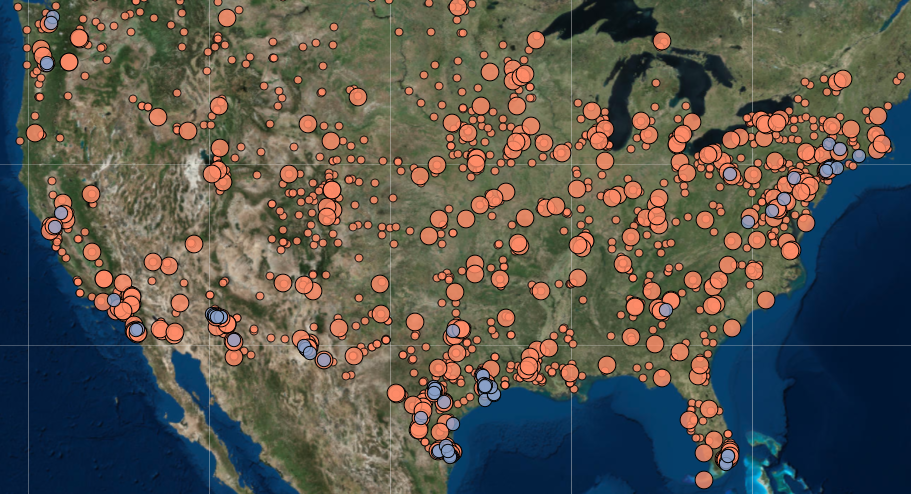Title Page
Texas Cities Want Millennials Living Downtown. So Why Does the State Keep Building Highways to the Suburbs? Texas Tribune.
Introduction
Benefit of Burden? The Cities Trying Out Universal Basic Income. The Guardian.
Next year Stockton in California will become the first US city to guarantee a basic income for some of its poorest residents, with about 100 families to receive $500 a month – funded by philanthropic donors – for a 12- to 18-month period.
“When nearly half of Americans can’t come up with $400 in case of an emergency, I think it’s likely this scheme will have a significant impact on recipients,” says Lori Ospina, the scheme’s director. “We think the current economic situation requires effective and innovative solutions and hope other city leaders will pursue measures that go beyond the status quo. This is hopefully just the start of a much larger national conversation.”
Executive Summary
When digital scholarship librarian Alex Gil watched the news unfold about the effects of the "zero tolerance" policy that separated children from their parents at the U.S.-Mexico border, he decided to put his skills to work to shed light on a confusing and chaotic situation. An assembled team of researchers and academics, including University of Houston graduate students Sylvia Fernández and Maria Álvarez, got together for a "crisis researchathon." Using data from public information requests and previous research, the team put together the locations of detention facilities to address the challenge of reunification for separated families--an ongoing problem even after the president signed an executive order to end the practice.
The resulting interactive map, Torn Apart/Separados, documents the private juvenile detention facilities, U.S. Immigration and Customs Enforcement facilities in use since 2014 as well as those not currently in use across the country. Though much of the recent activity and coverage has been along the southern border, the map shows just how widespread the infrastructure of detention is.
"It shows that ICE is everywhere,” Gil told Wired. “We ourselves were shocked even though we study this. A lot of America thinks this phenomenon is happening in this limited geographical space along the border. This map is telling a different story: The border is everywhere.”
The work was personal for many. "I arrived to this country at age ten with my parents after years of waiting for resident approval," writes Álvarez in the website's "Reflections" section. "I am an immigrant with privilege since my family was not fleeing violence, war, persecution or poverty. Even under these circumstances I was scarred by the experience and cannot begin to imagine the trauma these children will have to live with."
The website describes the six-day project as a collaboration between "xpMethod (Manan Ahmed, Alex Gil, Moacir P. de Sá Pereira, Roopika Risam), Borderlands Archives Cartography (Maira E. Álvarez, Sylvia A. Fernández), Linda Rodriguez, and Merisa Martinez." The project also includes data that can be harder to visualize and aggregate, like comments on detention center Google review pages asking for information about separated children.
Conclusion
One threat to public transit's future? Not paying bus drivers enough. Weakened union bargaining abilities, an aging workforce, incidents of violence and other factors are all cited in a deep dive into what's ailing
“We have drivers who are homeless in this country,” Larry Hanley, the president of ATU International, the largest labor union representing transit workers in the U.S., told CityLab. “In the Google area of California, the pay is so suppressed that we have drivers who are sleeping in their buses.”
And what about autonomous vehicles? Well, "as long as there are people boarding a communal vehicle, someone’s got to be in charge to manage them," writes Laura Bliss. "We talk about placing a greater focus on customer experience,” said Joshua Schank, the chief innovation officer at L.A. Metro, who imagined the future bus operator as a sort of navigator, helping riders with directions and getting on and off the bus as well as managing the crowd.
Endnotes
Depressing study finds young women underestimate how much motherhood will screw up their careers https://t.co/u8TrGJQKjD
— Bryce Covert (@brycecovert) June 25, 2018

